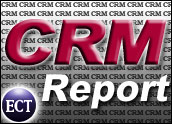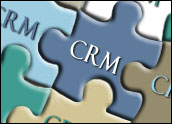
Look closely at any effective customer relationship management (CRM) strategy. Look beyond the technology, beyond the hype, and what will you see? What you’ll see is a company that knows how to effectively communicate with its customers.
Ask yourself, “What do CRM solutions actually do?” To put it very simply, they collect and manage customer information. Now ask yourself, “What is the real value or purpose of all this customer information?” Again, very simply, the real value of this information is in helping your organization to better communicate with your customers.
For example, customer information can tell us what products or services a customer has previously purchased and, as a result, can also tell us what products or services a particular customer is likely to purchase in the future. This information can, in turn, be used to guide future marketing activities and can also be used by sales and customer service personnel in face-to-face or call center interactions.
More Than Analytics
However, effective customer relationship management requires much more than simply tracking buying behaviors. A truly effective CRM strategy requires you to get personal, to understand your customers’ preferences and to ensure that these preferences are reflected in how you communicate with your customer, each and every time.
I know, at this point, you’re saying to yourself, “Ah, but we’re already doing that. We’ve consolidated our customer information. We’ve given our employees broad access to this information across our sales and service organizations. And we routinely segment our customer database to support targeted marketing communications.”
Well then, you’re off to a very promising start. But can you honestly say that you have an enterprise customer communications strategy that complements your CRM initiative and guides each and every customer communication? Are you absolutely certain about every e-mail and item of correspondence that your organization sends out? And do you really understand and incorporate your customers’ preferences?
Linguistic Conundrum
One great example that we commonly see are companies that diligently provide Spanish-language support in their call centers, and then send any number of complex documents and contracts to their Spanish-speaking customers in English. Not only is this off-putting and detrimental to their customer relationship, it’s also very costly. It increases call center traffic and in many cases can cause a customer to take their business elsewhere.
Another example that we commonly see is organizations that fail to embrace new electronic delivery channels and emerging communications technologies. Organizations that continue to send printed statements and correspondence to Web-savvy consumers soon find that their customers begin to look elsewhere for an organization that is willing to do business the way they want to do business. Organizations that struggle to deliver information electronically are also often unable to take advantage of the very same detailed customer information that informs their marketing efforts and print-based communications.
So, highly effective, compelling customer communications are really all about preference, channel and context. Getting personal means communicating in your customers’ preferred languages. It means embracing your customers’ preferred communication channel or channels. It means bringing context — based on the customer information you already own — to each and every communication.
So Many Channels
By the way, this challenge isn’t getting any easier. For example, new communication channels seem to be emerging daily. The days of simply inserting an offer or marketing message into a printed customer statement or billing are quickly fading into the past. Social networking and the continued evolution of the Web require that we use more immediate, interactive technologies like HTML, SMS messaging and even RSS (really simple syndication) feeds. A simple marketing axiom is “go where your customers are,” and if you serve a younger constituency, the Web is where they are. So get comfortable with these new technologies.
Doesn’t all of this personalization come at a high price? In some cases, the answer to this question is yes. Many organizations have, over the years, employed different approaches to try and bridge the customer communication gap. Many have invested one or more departmental solutions for print-channel communications, perhaps to produce billing statements with embedded marketing messages. Many have also built custom, in-house solutions, often leveraging Microsoft Word capabilities and templates, to produce customer correspondence.
Over time, print-centric departmental solutions and rapidly proliferating Microsoft Word templates become a cost burden and inevitably also begin to impede the very process they were first intended to facilitate — namely, the rapid production of compelling, contextual customer communications. In fact, many organizations literally find themselves drowning in communication templates, often attempting to manage thousands or even tens of thousands of document templates.
Bypass the Gatekeepers
Another key challenge with these early technologies is that they are tremendously IT dependent, and even routine changes and updates need to be routed through skilled technical resources for completion. As a result, many organizations that depend on these early solutions are unable to easily make simple changes to documents and communications; they continually struggle to respond to regulatory requirements; and they are often challenged to introduce new products and services in time to keep up with changing market demand. In short, these organizations are burdened by many systems but have found no real solution for their customer communication problem.
However, as with CRM systems and call center automation, new technologies have emerged to help organizations efficiently create and manage document-based customer communications. Often referred to as enterprise customer communication solutions, these solutions are rules-driven technologies that utilize existing customer information to produce highly personalized, compelling customer communications. These next-generation solutions have been designed to allow business users, not IT professionals, to control enterprise communications processes. Leading products also incorporate open, standards-based architectures for ease of integration to existing customer information systems.
Enterprise communications solutions are inherently capable of producing multi-channel, multi-lingual customer communications, and leading-edge products can utilize a single template to produce content for virtually any channel and in any language. As true enterprise platforms, these solutions not only produce high-volume batch document output, they are also capable of creating and managing individual, ad-hoc communications, including various electronic documents, notifications and messages across any number of different customer touchpoints. These electronic communications can range from direct customer correspondence in call centers and customer service operations, to email and SMS notifications, and even Facebook and MySpace messaging.
More Efficiencies
It is important to note also that, as these enterprise communications technologies continue to evolve, so too does the opportunity for return on investment (ROI). Early generation solutions simply focused on streamlining the production of high-volume print communications. Today’s leading solutions not only automate print communications, but also bring greater efficiencies in the creation and management of all communications, reducing the overall cost of customer communications. Because these solutions also enhance customer engagement through highly personalized and contextual customer communications, they can also develop new business, increase revenues and improve customer loyalty and retention.
Now, let’s return to our original premise. If customer information — in and of itself — is only as valuable as what you are able to do with it, have you put in place an enterprise communications strategy and supporting technology foundation that will allow you to employ this information in compelling, contextual customer communications? If not, you may be missing out on an important opportunity to improve customer loyalty, drive more revenue and — at the same time — reduce the cost of creating and managing these communications. And, if not, now is the time to do something about it.
Glen Manchester is CEO of Thunderhead, an enterprise communications company.














































